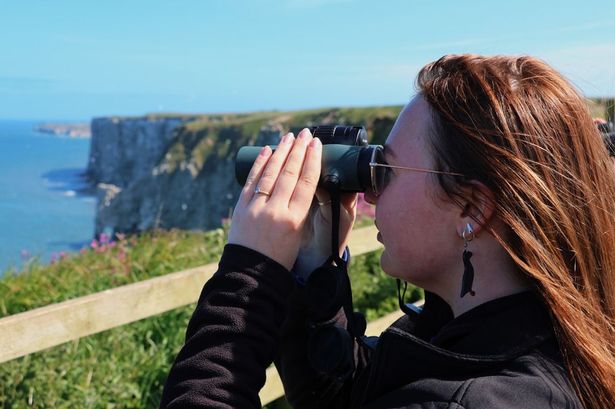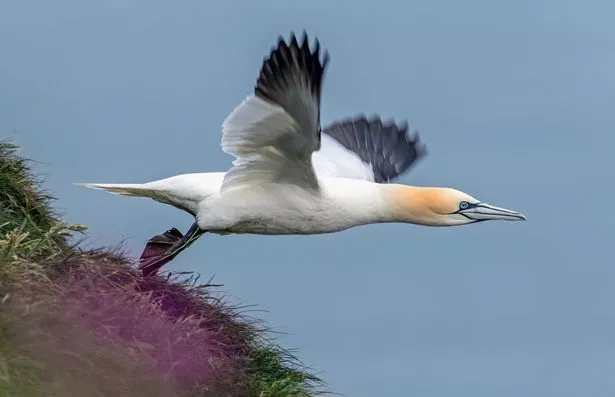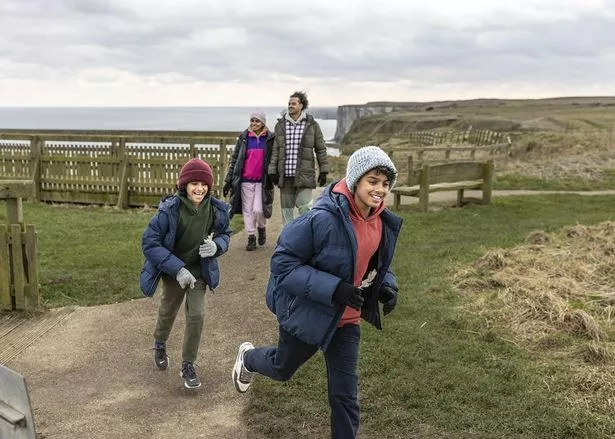
‘We used to be a hidden gem but now the word is well and truly out’
A nature reserve on the East Yorkshire coast is celebrating a boom in visitors. The number of people seeking out the sights and sounds of RSPB Bempton Cliffs has reached an all-time high.
The reserve on top of Bempton’s towering chalk cliffs, just north of Bridlington, is on now on course for its highest annual visitor figures in its history, with footfall figures increasing by 31 per cent compared with the same six months, January to June, of last year. An additional 22,001 visitors have been recorded in the first half of 2025, with a desire to reconnect with nature being one of the big attractions.
RSPB Bempton Cliffs said 91,667 visitors have been recorded so far this year, up from 69,666 in the same six months of 2024. The nature reserve has put its success down to a range of factors, including the good weather, as well as the impact of being showcased on national television.
Poppy Rummery, visitor experience manager, also believes the word is simply getting out that Bempton is a must-see visitor attraction on any trip to Yorkshire. She said: “Not only have we seen good numbers of gannets and other seabirds here, but we also now have the best visitor figures ever.
“We used to be a hidden gem but now the word is well and truly out, and people are traveling from the UK and right across Europe to see these amazing birds. We’ve had people from Holland, Germany and even Australia.”
Right now, the gannets are diving into the sea, bringing food back for their chicks, and August will be the perfect time to spot minke whales and dolphins too. With a 90 per cent score in the annual VisitEngland quality assessments for visitor attractions, Bempton Cliffs is open to visitors year-round, except for Christmas Day.
Around half-a-million seabirds gather at the site between March and August to raise a family on the chalk cliffs that overlook the North Sea. Between April and July, visitors find the cliffs transformed into England’s largest seabird colony, with puffins, gannets, kittiwakes and guillemots all living life on the edge.
When the seabirds leave, wild walks and dramatic seas draw visitors over the winter months too for the spectacular scenery and chance to spot short-eared owls hunting over the grassland. Scott Davison-Smith, commercial operations manager, said: “We’re delighted with these visitor numbers.
“People are realising that getting away from their smart phones and computer screens is a brilliant way to relax and that nature can be so restorative. They just want to reconnect with nature and what better way to do it than visit the only place in Yorkshire where you can see this amazing seabird spectacle.
“Receiving a 90 per cent score from VisitEngland’s annual quality assessment is the icing on the cake. It’s heartening, too, to know that our visitors want to help make a difference for nature.
“Doing more to look after our marine environment has never been more important given the range of threats our seabirds face and every visit made helps us to conserve the special wildlife here.” While Bempton is celebrating the visitor figures, Mr Davison-Smith cautioned it is important people understand not everything is well with our seabird populations.
The most recent seabird census, published in November 2023, found that more than half (62 per cent) of the seabird species on British and Irish coasts have declined over the last 20 years. And, shockingly, around one in four puffins, for which Bempton Cliffs is so well known, have been lost from across the UK since 2000.
He said: “This is one of the reasons why visitor support for Bempton is so vital. When people visit us, they learn more about the threats seabirds are facing and help support our crucial conservation work here, including monitoring of species. Almost half of our seabird populations are in decline but when we act, they can recover.”
Dave O’Hara, reserve manager, RSPB Bempton Cliffs, was also delighted with the visitor numbers. He said: “We have a loyal following of visitors from across Yorkshire and increasingly from across the country and overseas.
“It’s this support that helps us do more to protect our seabird populations, such as our successful campaign to end industrial sandeel fishing in the North Sea. Thanks to this, our puffins and other seabirds have finally been given a much-needed lifeline.”
RSPB’s conservation work at Bempton is supported by a team of around 70 volunteers. This ranges from practical conservation work to welcoming visitors or carrying out wildlife surveys.



